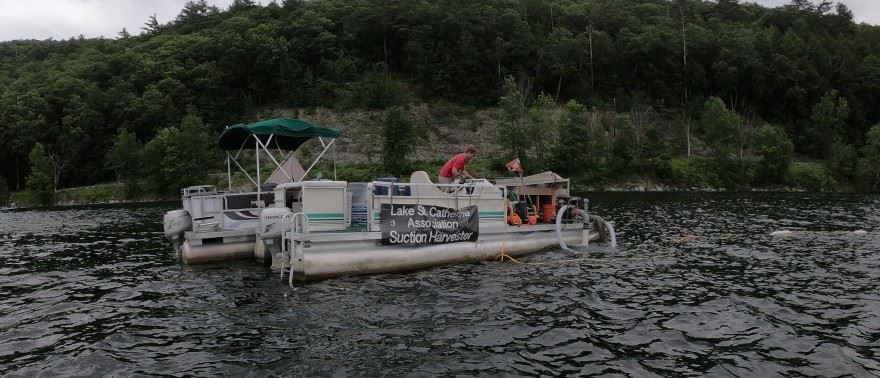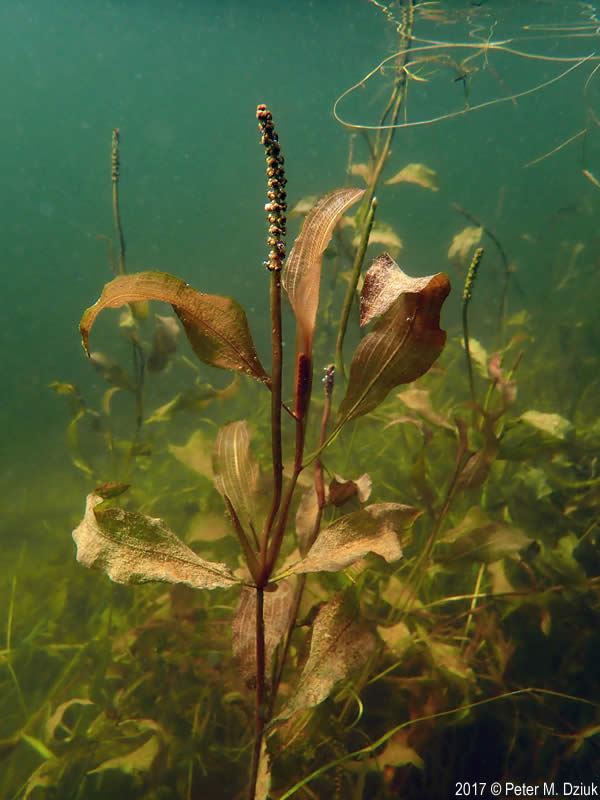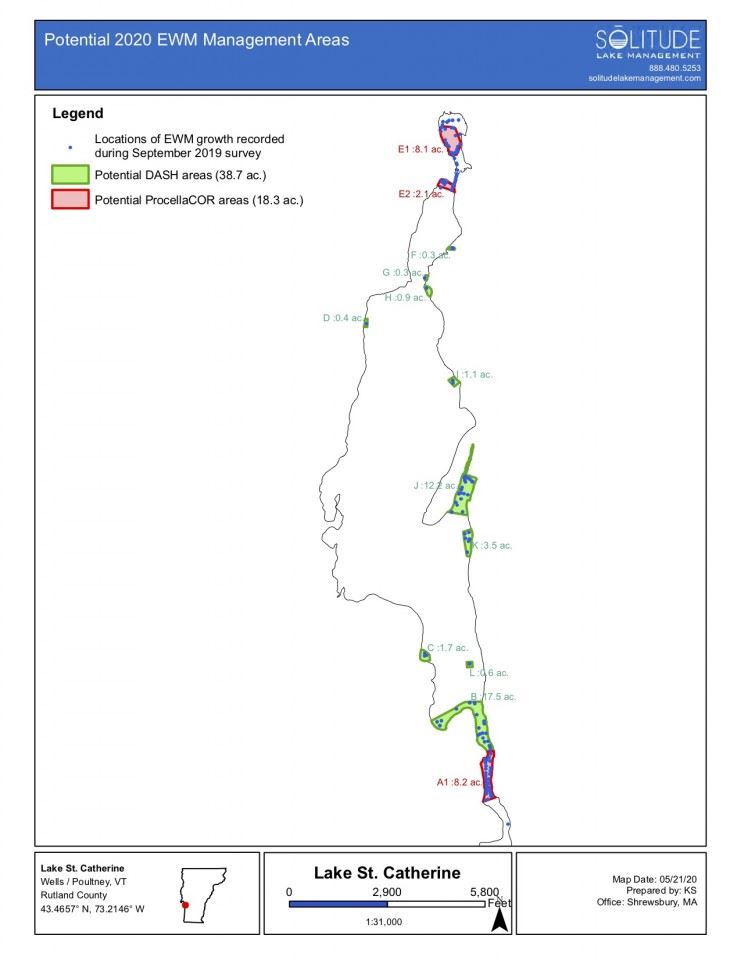Hello LSC.
Our 2020 Milfoil Control Program is well underway - and we'd like to provide you an update.
ProcellaCOR Treatment
On Wednesday, June 24th, three areas on LSC totaling 18.3 acres were treated with ProcellaCOR (highlighted in red in the attached map). This represents a 52% reduction in the amount of acres that were treated in 2019. Two areas were in the northern end of the lake in North Bay and Lily Pond, the other area was in the Channel south of the bridge. The results have been excellent - as there is no milfoil to be found in these treated areas, 17 days post treatment. We were also very happy to speak with some property owners in the Channel to hear their positive comments and observations about the results.
Suction Harvesting
Our diver assisted suction harvesting (DASH) team began their work on June 27th.

This season, the DASH team will be working in 10 areas, totaling 38.7 acres (highlighted in red in the attached map). This represents a 42% reduction in the amount of acres that were DASH'd in 2019.
Our DASH team sent in this report on their work so far:
"We have already finished Locations C, D, G, and I. Today we started work at location B and have also put in two days of work at location K. All locations were found to have very low density milfoil, I will attach a few photos [see one of these underwater photos below] of what we are generally observing at most sites. We also have surveyed the lake and couldn't find any large milfoil patches, the first time I have ever seen this while working on Lake St. Catherine. Overall the status of milfoil growth in the lake is very low from our observations!"
>> Please note, our DASH team is referring to the areas of LSC that have been part of our Milfoil Control Program over the past several years.
See the attached treatment map to see the locations they are referring to.
Weed Identification
Each season, we receive questions about weeds, so we want to show you some photos so you can clearly identify them.
Here is an image referenced by our DASH team in their report above. It was taken in LSC and shows milfoil and other native plants. As the DASH team mentioned, the milfoil they are seeing is low density. In the image, we have highlighted the milfoil with orange arrows, and an orange rectangle:
 Photo credit: LSCA DASH Team
Photo credit: LSCA DASH Team
Milfoil is an invasive species of plant that, by permit, we are allowed to address in LSC.
There is another weed in LSC that we receive a lot of questions about called Illinois Pondweed (potamogeton illinoensis). Based on the questions we've received, we know that it's sometimes confused with milfoil - even though they look very different.
This is Illinois Pondweed:

Photo credit: Peter M. Dziuk from the www.minnesotawildflowers.info website
This plant will grow to the surface and the stem at the top, called the flower, will extend past the waterline.
Illinois Pondweed is a native plant in LSC, so we are not allowed to treat or DASH it. Native aquatic plants are beneficial for the lake as they create a habitat in the lake ecosystem, cycle nutrients and can help with erosion control and repelling invasives.
Sometimes the pondweed can grow in your dock and swimming areas. You are permitted to hand-pull these weeds if they are a nuisance in these areas. If you do hand-pull any aquatic plants, PLEASE do not leave them in the water! Bring them on shore to dewater and dry out, then dispose of them as you would lawn waste.
We'd also ask that if you see floating weeds in the water, near your dock, or on your shoreline, please remove them from the water. This is ESPECIALLY important with milfoil! Even small fragments of milfoil can seed new beds of milfoil plants.
Looking Ahead
Our DASH team will continue their work into August, and we'll continue to provide you with updates as their work progresses.
We have already started discussing our milfoil control plans for 2021. As we've done since 2004, in October, we will perform a lake-wide plant survey which will evaluate our milfoil control efforts for 2020. This report will guide our plans for 2021. We'll share this report when it becomes available in November.
If you'd like to review the previous LSC Aquatic Plant Surveys, please click here to view them in the Downloads section of our website.
If you have any questions on our Milfoil Control Program, please email us: info@lakestcatherine.org.
2020 Treatment Map:

Are you a member yet? Maintaining the lake costs approximately $125,000 annually. Grants, membership dues and contributions make up the majority of our funding. If you'd like to help, please consider becoming a member or making a donation. The LSCA is a 501 (c)(3) non-profit organization and any contribution that you make is tax deductible.